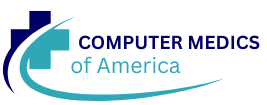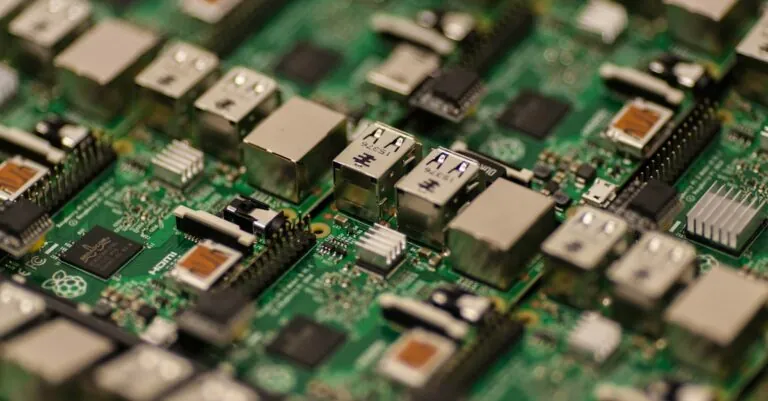In today’s tech-savvy world, the Internet of Things (IoT) is no longer just a buzzword; it’s a way of life. Imagine a world where your fridge reminds you to buy milk while your thermostat adjusts the temperature just because it knows you’re home. Sounds like a sci-fi movie, right? But it’s happening now, and it’s all thanks to IoT devices.
Table of Contents
ToggleOverview of Internet of Things Devices
Internet of Things devices encompass a wide range of technologies designed to connect everyday items to the internet. These devices collect, send, and act on data, enhancing efficiency and convenience in various settings. Smart home products dominate the market, including security cameras, smart speakers, and lighting systems.
Connectivity defines most IoT devices, often utilizing Wi-Fi, Bluetooth, or cellular networks. Smart thermostats exemplify how these devices adjust heating and cooling based on user preferences, maximizing comfort and energy savings. Wearable technology continues to grow, with fitness trackers monitoring health metrics like heart rate and step count.
In industrial applications, IoT devices facilitate predictive maintenance. Sensors monitor machinery performance, alerting operators to potential issues before breakdowns occur. This proactive approach reduces downtime and maintains productivity.
Agricultural sectors also benefit significantly from IoT technology. Smart irrigation systems optimize water usage according to weather conditions, consequently improving crop yield. Livestock tracking devices monitor animal health and location, ensuring better care.
Healthcare has seen advancements through connected devices assisting patient monitoring. Devices can send real-time updates to healthcare providers, allowing for timely interventions. These developments contribute to improved patient outcomes and more streamlined healthcare services.
Thus, IoT devices play a critical role in transforming various industries. Their applications, ranging from home automation to smart healthcare solutions, showcase a practical integration of technology into daily life.
Types of Internet of Things Devices
IoT devices categorize into various types based on their functionalities and applications. Each category plays a vital role in enhancing daily life and operational efficiency.
Smart Home Devices
Smart home devices enhance convenience and security in everyday living. Examples include smart security cameras that provide real-time monitoring and smart speakers that facilitate voice-activated control. Smart lighting systems allow users to adjust lighting remotely, fostering energy efficiency. These devices connect via Wi-Fi or Bluetooth protocols, ensuring seamless operation within home environments.
Wearable Technology
Wearable technology encompasses devices that individuals can wear to monitor health and fitness. Smartwatches track heart rate, steps, and sleep patterns, aiding in personal health management. Fitness bands also offer similar capabilities, encouraging an active lifestyle. This technology often syncs with smartphones, enabling users to access data easily and manage daily routines.
Industrial IoT Devices
Industrial IoT devices transform manufacturing processes and supply chain management. Examples include sensors that monitor equipment performance and robotic systems that streamline production. These devices provide data analysis for predictive maintenance, which minimizes downtime and enhances productivity. They often utilize cellular networks or dedicated industrial protocols to ensure reliable communication.
Healthcare IoT Devices
Healthcare IoT devices improve patient monitoring and treatment efficacy. Connected devices like remote patient monitors enable healthcare professionals to track vital signs continuously. Wearable ECG monitors and insulin pumps offer real-time data to patients and doctors. This technology fosters timely interventions and optimizes patient care, demonstrating potential to enhance healthcare outcomes.
How Internet of Things Devices Work
IoT devices operate through a combination of sensors, data transmission capabilities, and cloud computing.
Sensors and Actuators
Sensors detect environmental changes, including temperature, humidity, and motion. They convert these physical phenomena into data signals. Actuators, on the other hand, take action based on the data received. For example, a temperature sensor in a smart thermostat measures the indoor climate and communicates this information. If it detects the temperature fluctuating beyond a set range, the actuator adjusts the heating or cooling system accordingly. These components work together, allowing IoT devices to respond dynamically to their surroundings and enhance user experience.
Data Transmission
Data transmission involves sending information from IoT devices to a central system or the cloud for processing. Wi-Fi, Bluetooth, and cellular networks typically facilitate this communication. Once sensors gather data, they transmit it for analysis. Cloud computing then processes this data, allowing for real-time feedback and actionable insights. For instance, a smart irrigation system collects soil moisture data and sends it to the cloud. The cloud processes the information and determines the optimal watering schedule, resulting in efficient water usage. This seamless data flow drives the functionality of IoT devices.
Benefits of Internet of Things Devices
IoT devices enhance everyday efficiency and convenience. Smart home products, like lighting systems and security cameras, simplify daily tasks. They allow users to control home settings remotely, leading to energy savings and increased security.
Data analytics plays a significant role in these benefits. With real-time data collection, users gain insights into their energy usage patterns. This knowledge helps in making informed decisions to reduce costs.
Healthcare improvements demonstrate the impact of IoT devices. Connected health monitors track vital signs, alerting caregivers to any abnormalities. These devices contribute to better patient outcomes through proactive interventions.
Industrial applications also see substantial gains. Predictive maintenance enables businesses to identify equipment issues before they cause downtime. This technology enhances operational efficiency and lowers maintenance costs.
Smart irrigation systems maximize water use in agriculture. By analyzing soil moisture, these devices optimize watering schedules. Farmers benefit from reduced water waste while improving crop yield.
Wearable devices promote health and fitness. Individuals can monitor their activity levels and make adjustments to achieve fitness goals. They encourage a more active lifestyle through continuous feedback.
Scalability remains a key advantage of IoT systems. As needs evolve, users can integrate additional devices without significant disruptions. This adaptability supports the growing demand for personalized solutions.
The integration of IoT in various sectors illustrates its transformative power. Each connected device contributes to a more efficient and data-driven world. Through leveraging advanced technology, societies can enjoy improved quality of life and streamlined processes.
Challenges and Limitations
Security concerns pose a significant challenge for IoT devices. As these devices collect vast amounts of data, vulnerabilities can lead to unauthorized access and data breaches. Manufacturers often prioritize convenience over security, heightening risks.
Connectivity issues create limitations for IoT systems. Not all locations guarantee reliable internet access. Urban areas may have strong signals, while rural settings face connectivity challenges, which impacts device performance.
Interoperability remains an obstacle as well. Different manufacturers create devices that use various protocols, resulting in compatibility issues among products. This fragmentation complicates integration, leaving users frustrated.
Data privacy concerns arise as personal information gathers from IoT devices. Users may unknowingly share sensitive data, sparking debates about consent and data handling. Stricter regulations may emerge to address these concerns, influencing how companies manage data.
Cost factors can limit widespread adoption, especially for advanced IoT devices. High initial investments may deter consumers and small businesses. Moreover, maintenance costs can add up, raising questions about long-term affordability.
Scalability can also present challenges. Adding new devices might strain existing systems if networks aren’t designed for expansion. Users may encounter performance issues as they integrate more technology into their environments.
Power consumption affects many IoT devices, particularly those that require constant connectivity. Short battery life can hinder usability in devices like wearables and smart home sensors. Energy-efficient designs remain vital for sustainable growth in the IoT sector.
Regulatory compliance introduces complexity to IoT development. Adhering to varying industry standards across regions can create hurdles. Companies face additional pressure as they navigate these regulations to ensure product viability.
The Internet of Things is reshaping how people interact with their environment and manage daily tasks. With a wide array of devices enhancing convenience and efficiency across homes, industries, and healthcare, it’s clear that IoT is more than just a trend. As technology continues to evolve, the potential for IoT devices to transform everyday experiences grows.
However, challenges like security, connectivity, and interoperability must be addressed to fully realize this potential. By tackling these issues, society can unlock the true benefits of IoT, paving the way for smarter living and improved operational efficiency. The future promises exciting developments in the IoT landscape, making it an essential area to watch.



